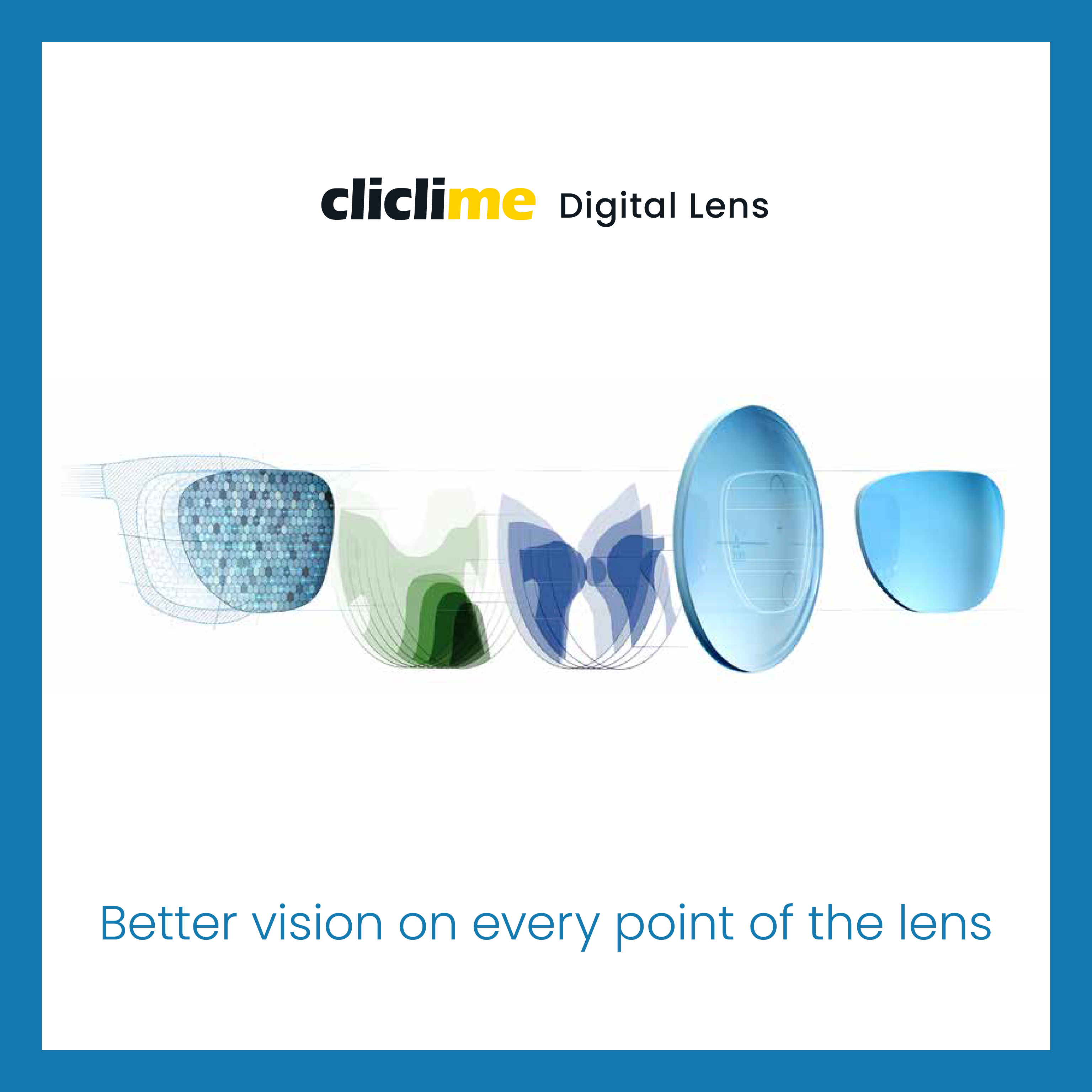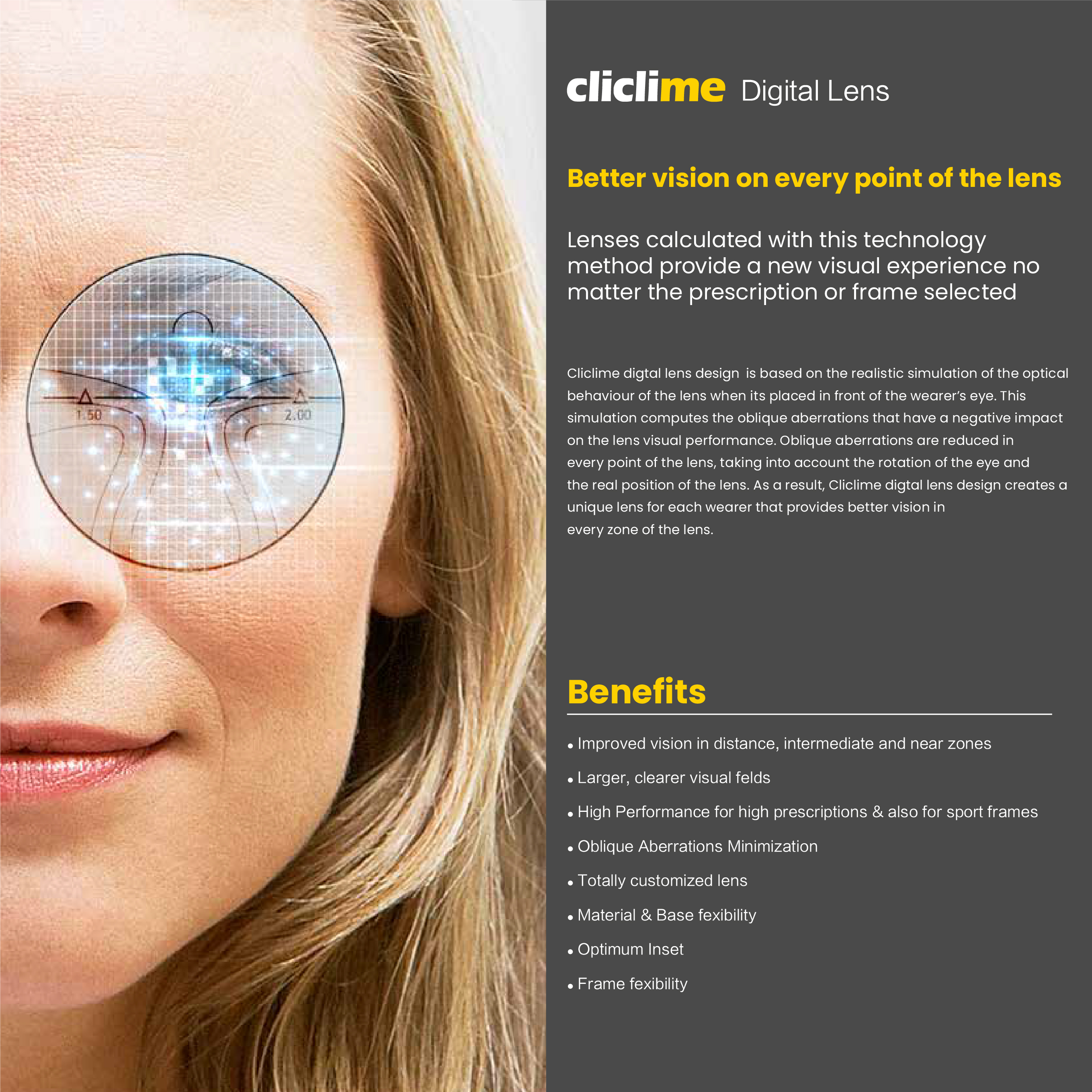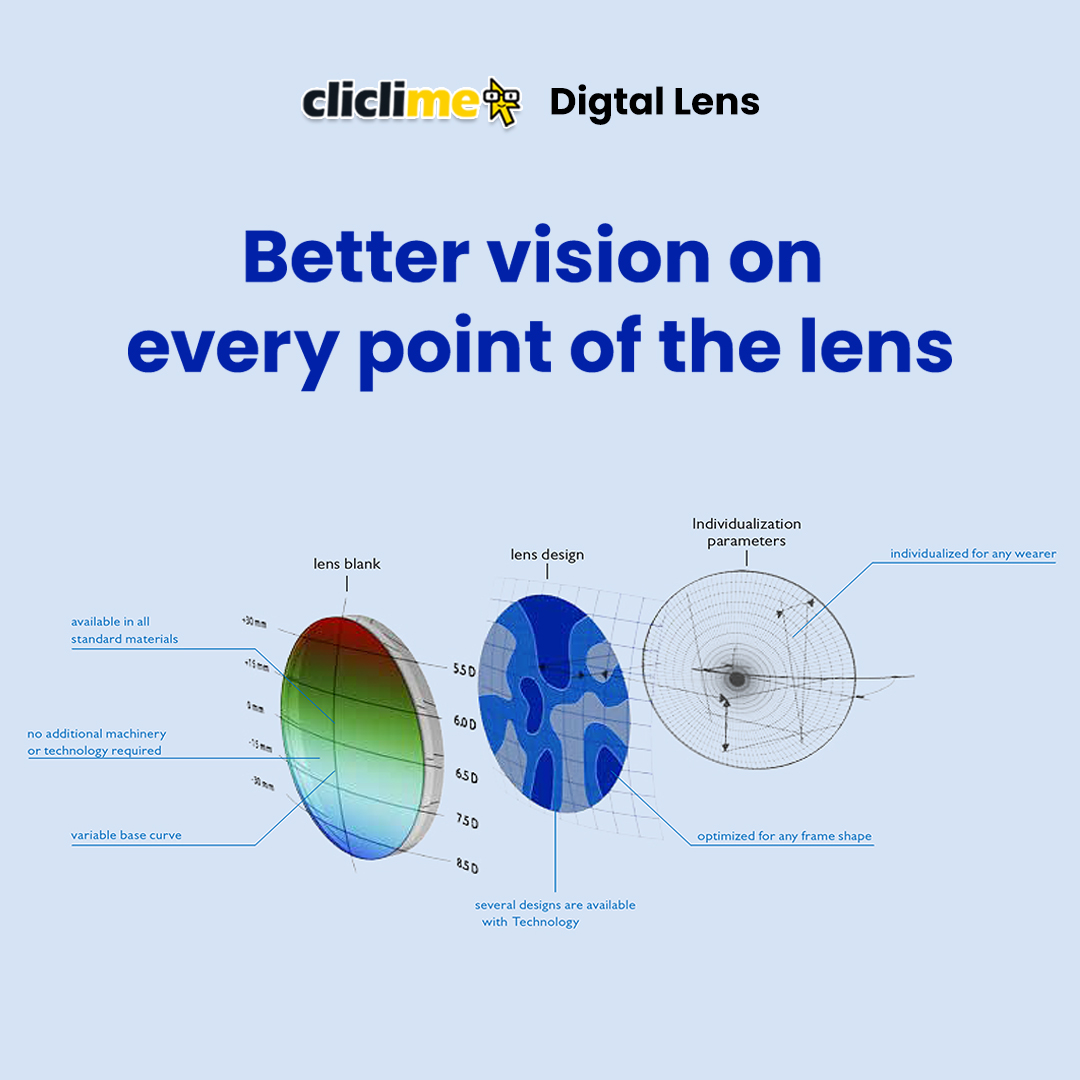How Do Progressive Glasses Work
Progressive glasses have three different prescriptions in one lens, which are blended together to create a seamless transition between near, intermediate, and far distances. The top of the lens is designed for distance vision, the middle for intermediate vision, and the bottom for near vision. The transition between the three prescriptions is gradual, so your eyes can adjust to the different focal lengths without anynoticeable lines or abrupt changes.
The top part of the lens is usually the largest and provides the clearest vision for distance. The middle part of the lens is slightly smaller and provides a clear vision for intermediate distances, such as computer screens or dashboard displays. The bottom part of the lens is the smallest and provides a clear vision for close-up tasks, such as reading or sewing.
The design of progressive glasses is based on the principle of simultaneous vision, which means that your eyes can focus on multiple distances at the same time. This is different from bifocal glasses, which have a visible line separating the two prescriptions. With progressive glasses, you can move your eyes up and down the lens to find the right focal point for the task at hand.
Benefits: Progressive glasses offer several benefits over traditional bifocal or trifocal glasses. They provide a more natural and seamless transition between different distances, which can reduce eye strain and headaches. They also eliminate the need to switch between different pairs of glasses for different tasks, making them more convenient and practical.Progressive glasses are also more aesthetically pleasing than bifocal or trifocal glasses, as they do not have a visible line on the lens. This makes them a popular choice for people who want to maintain a youthful appearance or who work in professional settings.
Progressive glasses are a popular choice for people who need correction for presbyopia. They work by combining different prescriptions into one lens, allowing you to see clearly at all distances. The gradual transition between the different prescriptions provides a more natural and seamless viewing experience, reducing eye strain and headaches. If you are experiencing presbyopia, talk to your eye doctor about whether progressive glasses are right for you.
How to Use Progressive Glasses?
Progressive glasses are a popular choice for people who need glasses for both near and far vision. These glasses have a gradual change in prescription from the top to the bottom of the lens, allowing you to see clearly at all distances. Here are some tips on how to use progressive glasses:
1. Get used to the different zones: Progressive glasses have three zones - the top for distance vision, the middle for intermediate vision, and the bottom for near vision. It may take some time to get used to the different zones, but with practice, you will learn to adjust your gaze to the right zone.
2. Look straight ahead: When you first put on your progressive glasses, look straight ahead and move your head to look at different objects. This will help you get used to the different zones and find the right one for the task at hand.
3. Tilt your head: To see through the near vision zone, you may need to tilt your head slightly downward. This will help you focus on objects that are close to you, such as reading material or your phone.
4. Use the right zone for the task: When you are reading or doing close work, use the bottom zone of your glasses. When you are driving or looking at objects in the distance, use the top zone. For computer work or other tasks that require intermediate vision, use the middle zone.
5. Keep your glasses clean: Progressive glasses can be more difficult to clean than regular glasses because of the different zones. Use a microfiber cloth and lens cleaner to keep your glasses clean and free of smudges.
With these tips, you can learn how to use your progressive glasses effectively and enjoy clear vision at all distances.

How to Get Used to Progressive Glasses
Getting used to progressive glasses can be a challenge. Here are some tips to help you adjust to your new glasses.
1. Wear your glasses all the time
The first step to getting used to progressive glasses is to wear them all the time. This will help your eyes adjust to the new lenses and get used to the different focal points. It may take a few days or even a few weeks to get used to the new glasses, but wearing them consistently will help speed up the process.
2. Move your head, not your eyes
One of the biggest challenges of progressive glasses is finding the right focal point. Unlike traditional glasses, where you can look straight ahead to see clearly, progressive glasses require you to move your head to find the right focal point. Instead of moving your eyes, move your head to look at different distances. This will help you find the right focal point and reduce eye strain.
3. Start with simple tasks
When you first get your progressive glasses, start with simple tasks like reading or watching TV. These tasks will help you get used to the different focal points and adjust to the new lenses. As you get more comfortable with your glasses, you can move on to more complex tasks like driving or using a computer.
4. Be patient
Getting used to progressive glasses takes time, so be patient. It may take a few days or even a few weeks to adjust to the new lenses. Don't get discouraged if you experience headaches or eye strain at first. These symptoms are normal and will go away as your eyes adjust to the new lenses.
5. Visit your eye doctor
If you're having trouble adjusting to your progressive glasses, visit your eye doctor. They can check your prescription and make any necessary adjustments to your lenses. They can also provide tips and advice on how to get used to your new glasses.
Remember to wear your glasses all the time, move your head instead of your eyes, start with simple tasks, be patient, and visit your eye doctor if necessary. With these tips, you'll be seeing clearly in no time!

Progressive Glasses Pros and Cons
Like any other product, progressive glasses have their pros and cons. In this blog, we will discuss the advantages and disadvantages of progressive glasses.
Pros:
1. Convenience: Progressive glasses eliminate the need for multiple pairs of glasses. With progressive lenses, you can see clearly at all distances without having to switch between different glasses.
2. Aesthetics: Progressive glasses have a more modern and sleek look than traditional bifocal or trifocal glasses. They are also less noticeable, making them a popular choice for people who want to avoid the "old-fashioned" look of traditional bifocals.
3. Comfort: Progressive glasses offer a more natural and comfortable viewing experience than traditional bifocals or trifocals. The seamless transition between different prescriptions reduces eye strain and headaches.
4. Customization: Progressive glasses can be customized to fit your specific needs. Your optometrist can adjust the prescription to ensure that you have the best possible vision at all distances.
Cons:
1. Cost: Progressive glasses are generally more expensive than traditional bifocals or trifocals. The cost can be a significant factor for people who are on a tight budget.
2. Adjustment period: It can take some time to adjust to progressive glasses. The seamless transition between different prescriptions can be disorienting at first, and some people may experience dizziness or headaches during the adjustment period.
3. Limited field of vision: Progressive glasses have a limited field of vision compared to traditional single-vision glasses. The reading area is usually small, and the distance area may not be as clear as with single-vision glasses.
4. Not suitable for all activities: Progressive glasses may not be suitable for certain activities, such as playing sports or driving at night. The limited field of vision can be a safety concern in these situations.
Progressive glasses offer many benefits, including convenience, aesthetics, comfort, and customization. However, they also have some drawbacks, such as cost, adjustment period, limited field of vision, and suitability for certain activities. It's essential to weigh the pros and cons carefully before deciding whether progressive glasses are the right choice for you. Consult with your optometrist to determine if progressive glasses are the best option for your vision needs.
Related Post:
4 Things You Should Know About Progressive Glasses












